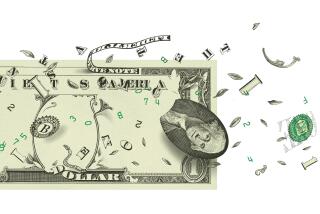How Long Can the Internet Bubble Last?
- Share via
A physician in his mid-30s who has just moved to Oregon reported enthusiastically that he had found a job. He had joined friends in a new Internet start-up. When asked what it would sell, he replied with no trace of irony, “We haven’t decided yet.”
On the East Coast, a salaried man spoke of his six-month-old daughter. “If we keep getting 20% a year in the stock market, what we have saved for her so far will put her through college.”
So it goes in the heady opening of a “new millennium,” among the young and also among some of their parents’ generation. Optimism, if not euphoria, is hard to resist when it seems to be everywhere.
The old year surely closed upbeat for investors. The two principal stock markets in the United States, the New York Stock Exchange and the NASDAQ, punched up new highs on the last day of 1999, ending on up-ticks what was the most remarkable decade of stock market gains this country has known. The Dow Jones industrial average climbed 318% over the 10-year span and the NASDAQ, heavy with computers, the Internet, telephony and biotechs, appreciated 795%.
Meanwhile, American pundits are hailing America at the end of “the American century” as far and away the most powerful and impressive economy on Earth. Indeed, the American economy, powered by a surge in productivity, chalked up a stellar performance in the late 1990s. It is proving to be an unmatched engine of jobs and income, but whether the business cycle has been repealed is another question.
Technology, it is now widely held, is the key to American productivity and economic and military power and is the motive force behind the big bull market that has been roaring ahead since 1982.
Is the past prologue? Or have we investors been more lucky than smart, riding the leading edge of a bubble?
There, now, is an ugly word, a word that causes all to recoil because of the inevitable association of “bubble” with “burst.” Three years ago, Alan Greenspan, chairman of the Federal Reserve, implied that bubble was the right word when he characterized the stock market as buoyed by “irrational exuberance.” That phrase brings to mind what used to be called “manias,” as in the title of economist Charles P. Kindleberger’s 1978 book, “Manias, Panics and Crashes.”
The title alone is instructive. It describes a sequence that Kindleberger finds has repeated itself many times. Of course, the circumstances are never identical. Each bull market--in tulips, land, sailing ships, shares, bonds--can be distinguished from predecessors, giving encouragement to those who want to believe there will be no reversal, or at least that there will be plenty of time to sell before others get the same idea. “At a late stage,” Kindleberger teaches, “speculation tends to detach itself from really valuable objects and turn to delusive ones. A larger and larger group of people seeks to become rich without a real understanding of the process involved.”
Does that not sound like our current mania for IPOs, initial public offerings of stock in which people beg their brokers to “get me some” at the offering price in the expectation of selling at a gain of 50% or 100% on the first day?
And what does the company sell? It’s an Internet company, and as soon as “the market” recognizes that, it’s going to take off.
One is reminded of the story that came out of the Florida land “boom” of the 1920s: Investor A: I just sold my dog for $50,000. Investor B: What will you do with the money? Investor A: Oh, not for cash. I took two $25,000 cats.
But is this not unnecessarily gloomy? Does America not have securities laws that didn’t exist in the 1920s, laws that require full disclosure with any public offering and that enable the Securities and Exchange Commission to put “boiler room” securities touts out of business? It does. And the newly public Internet start-ups disclose that they have no revenues and no profits--yet. But they have an idea and they have faith, and ideas and faith pave the path to riches.
It is useful to recall that while markets cruise at stratospheric levels, individual stocks have plummeted. Iridium, which had a plan for worldwide telephone service point-to-point, went into Chapter 11 in 1999. Rite Aid retracted an earnings forecast and fired its management team. You can bet that by 2001 there will be Internet companies acknowledging that their results for 1999 or 2000 were overstated. Remember Equity Funding in the 1970s?
Sophisticated investors will tell you that ultimately there will be no generalized market panic, rush for cash and crash because the Federal Reserve stands ready as the lender of last resort. When on Oct. 19, 1987, the Dow plummeted 508 points, or 22.6%, the Fed responded the next morning by announcing that it would pour into the banking system all the money needed to keep financial institutions afloat. It did so, and that panic dissipated quickly, with no discernible damage to the economy.
The Fed’s responsibility is to keep the system from seizing up, but it certainly is not committed to protecting present stock market values, or anything like them. History will reveal whether we are now experiencing a turn-of-the-century Internet bubble.






